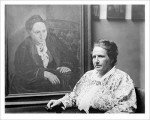2004: Book of the Year
Orhan Pamuk, Snow (tr. Maureen Freeley, Faber and Faber, 436 pages, 2004)
I was just about to take a pass on producing one of those standard “Top Ten” books-of-the-year lists when I read the Globe and Mail’s roundup (Dec. 24, 2004) of the favourite 2004 books of a couple dozen writers, critics, and other readers.
Well, as they say in “Globespeak,” I was “shocked and appalled.” Most of the picks were distressingly idiosyncratic and/or trivial. Several readers had nothing more to say about 2004 than that they were still catching up with George Eliot, Willa Cather, and William Faulkner. I hate it when people are asked to name their best 2004 books and they come up with something they happened to read in 2004 from fifty or a hundred years ago — it’s just not playing the game by the rules, as far as I’m concerned. After somebody who’s supposed to tell you about this year’s books instead gives you a rollicking account of how much fun they had reading Dante’s Inferno, what can you say except, “That’s nice, dear”?
Although several detective novels and their writers got named -– the usual suspects: Henning Mankell, Kathy Reichs, Ian Rankin — limited notice was accorded “serious” books, or what Gore Vidal used to call “Quality Lit.” Only one writer, Gillian Slovo, managed to find Philip Roth’s The Plot Against America. I started to think, If I’ve just seen the so-so minds of my generation prowling the stacks, I’d better sharpen my digital pencil. There was even one person, Richard Monette of the Stratford Festival, whose book of the year was Dan Brown’s The Da Vinci Code!! I think that’s what did it for me . . . that, and the fact that the real book of the year didn’t receive so much as a single mention from the Globe’s corps of readers.
The book of the year for 2004 is Turkish writer Orhan Pamuk’s novel about poetry, love, religion, politics, and contemporary Turkey, a magically real tale titled Snow. One of the reasons that I hesitated to write about this year’s best books is that Snow was so widely, intelligently, and enthusiastically praised by writers around the world that I didn’t have much to add to the encomiums. Even the Globe carried a thoughtful, favourable review back in August. Margaret Atwood in The New York Times called it “not only an engrossing feat of tale-spinning, but essential reading for our times.” John Updike in The New Yorker declared that Pamuk, “relatively young as he is, at the age of 52, qualifies as that country’s candidate for the Nobel Prize.” Richard Eder, also writing in the Times, describes Pamuk as the “great and almost irresistibly beguiling Turkish novelist.” Amen to all of the above.
Snow is the story of a Turkish poet pen-named Ka (an abbreviation of his full name), long exiled in Germany, who is permitted to return to Istanbul for his mother’s funeral, and who then makes a journey, ostensibly on a journalistic mission, to the distant city of Kars, in mountainous northeastern Turkey, near the Armenian and Russian borders. The assignment is to write an account of a wave of suicides by schoolgirls who had been ordered by the secular Turkish government to stop wearing headscarves to school, but this journalistic chore mainly serves to provide Ka an entrée into the depths of Turkish society. On the way to Kars, the snow starts falling, and it keeps falling throughout Ka’s several-day stay in the city. Already, we are in Pamuk’s crystalline labyrinth: “snow” in Turkish is “kar,” the poet is named “Ka,” the impoverished city is “Kars” . . . and no doubt, lurking in the literary shadows is Kafka’s “K.”
In Kars, Ka falls in love (with a woman he’d seen and admired decades before); meets all the local Islamist politicos, imams, and on-the-lam terrorists (particularly, a mysterious fundamentalist named Blue); becomes inadvertently involved in a local revolution which occurs in the town theatre and is led by, of all people, a travelling actor; and most important of all, is unexpectedly visited by his long-absent poetic muse and is impelled to write an extraordinary serial poem, whose structure is based on the shape of, what else?, a snowflake.
About halfway through this thoroughly-postmodern picaresque tale, it becomes apparent that the adventures of Ka are being narrated by a Turkish novelist named Orhan Pamuk. I have to confess to a weakness for novels in which the novel’s author is a character, a weakness that began when I read Christopher Isherwood’s Goodbye to Berlin, and has continued right up to Tomas Eloy Martinez’s Santa Evita and Javier Cercas’s Soldiers of Salamis. I’m not entirely sure of the reasons for this particular attraction, but it has something to do with fiction’s relationship to reality. What the presence of the author as a character does is to torque that relationship by explicitly interrogating the reasons for fiction. It is as though the author is saying, Here I am, an actual person, sticking myself into this story I’m making up in order to declare that what I have to say has to take a fictional form.
Although I recognize that a lot of novel-reading and novel-writing is aimed at entertainment — and that’s a perfectly legitimate reason to produce and consume fiction — I increasingly prefer the fiction I read to have a kind of imperative quality. That is, there was no other way for Pamuk to say what he has to say about art, God, politics and the rest without creating this imaginary representation. Pamuk the character turns out to be a kind of double or mirror of Ka the poet, and this doubling and mirroring of characters recurs throughout the book: Ka’s beloved has a refracting sister; both of them are involved with the Islamic terrorist Blue in ways that mirror their relationships to Ka; the fundamentalist student from the local religious high school that Ka meets has a best friend who is his psychological twin, and so on. Pamuk’s characters are not only persuasive as people, they are also a schematic of possibilities.
Although set in the 1990s, and written between 1999 and 2002 (it was published in Turkish in 2002), Snow is not only, as Margaret Atwood says, “eerily prescient, both in its analyses of fundamentalist attitudes and in the nature of the … conspiracies and violence it depicts,” but has inadvertently acquired additional topicality with this month’s decision by the European Union to begin membership negotiations with Turkey. Snow gives us a more penetrating account of the political-religious tensions in secular, Islamic Turkey than any extant work of non-fictional reportage or history.
Pamuk is convincing on a score of subjects in this, his seventh, novel. He succeeds in conveying the God-hunger of masses of impoverished people throughout the world. His surrealistic account of the threading of TV cables through the snowy streets of Kars to produce the first live television broadcast from the town theatre, mirrored by an ancient newspaper press that prints news of the future, scathingly sends up the stresses of modernization. His portrait of revolution and playing at revolution, in which stage soldiers fire real bullets into the audience, offers an edgy commentary on politics and violence. As Atwood smartly puts it, Pamuk’s novels are part of a longtime project of “narrating his country into being,” and his latest installment is an “in-depth tour of the divided, hopeful, desolate, mystifying Turkish soul.”
Of all the things I found persuasive in Snow — and one that’s been less remarked upon by its reviewers — is that Pamuk offers one of the most believable accounts I’ve read of the writing of poetry, especially the sort of “serial poem” that its authors often describe as “dictated.” Both the description of the writing of the poems, as well as the paraphrase of the poems’ contents, are utterly credible. One critic mildly complained that Pamuk should have included the actual poems in the book (a la Boris Pasternak’s Dr. Zhivago, I guess), but one of the intended outcomes of Pamuk’s great tale of making art is to leave the reader wanting to read no other book in the world than Ka’s unpublished serial poem, Snow.
Among the other half-dozen notable books of 2004:
I think Philip Roth is the best writer in the United States (as well as the most prominent Nobel-Prize-winner-in-waiting), and any new book he publishes in any given year deserves serious attention. His latest novel, The Plot Against America (another book in which the author is a character), a bold what-if imagining of proto-fascist aviator Charles Lindbergh winning the 1940 American presidential election, crosscut with a childhood memoir of Philip Roth growing up in New Jersey, is a tour de force. Perhaps not as scintillating as The Human Stain (2000) and certainly not as biting as Operation Shylock (1993), The Plot Against America demonstrates that Roth, now in his 70s, remains marvellously inventive.
The Booker Prize has been strewn so frivolously in recent years that this year’s choice, gay writer Alan Hollinghurst’s The Line of Beauty, is notable for its credibility. Hollinghurst’s sumptuously-written, coruscating portrait of Thatcherite England in the mid-1980s, wraps in a major homosexual sub-plot and offers an array of not very loveable, but eerily sexy gay characters.
Another Booker nominee, gay writer Colm Toibin’s The Master, a fictionalized account of the late-middle years of novelist Henry James, is probably a more coherent, thoughtful book than Hollinghurst’s. Comparisons aside, it offers an intelligent study of the terrible repressions that James distilled into art.
One late 2003-book that didn’t receive sufficient attention and deserves 2004 mention is Nobel Prize-winner J.M. Coetzee’s Elizabeth Costello, a wonderfully strange genre-bending book in which a fictional elderly Australian woman writer delivers a series of J.M. Coetzee lectures on everything from fiction to fascism to animal rights.
Two memoirs make my list: Vancouver writer Bruce Serafin’s Colin’s Big Thing is about comic book artists, working the nightshift in the universal post office, coming of age in various Canadian outbacks, and living not-quite-down-and-out in East Vancouver. The writing is intense, passionate, and accessible.
The other work of time-retrieved that’s thoroughly engrossing is Israeli novelist Amos Oz’s A Tale of Love and Darkness, his beautifully re-imagined memoir of growing up in the nascent Jewish state in the post-World War II era.
Admittedly, none of the above is in the same class as The Da Vinci Code.
Berlin, Dec. 25, 2004


